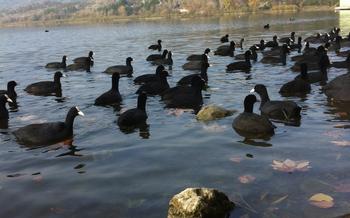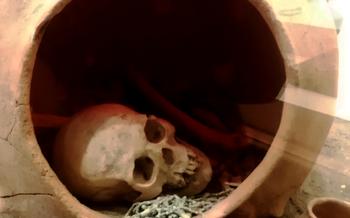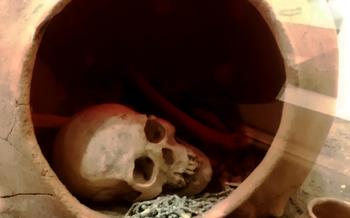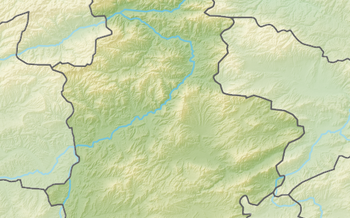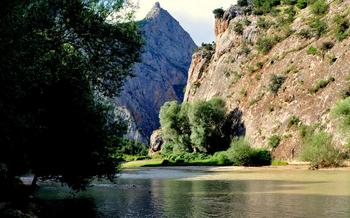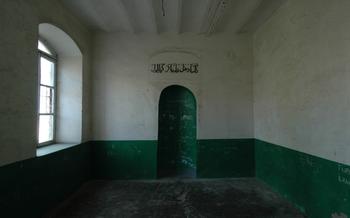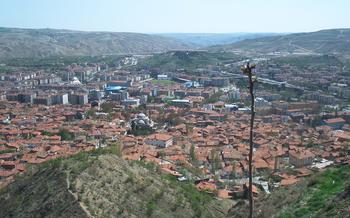
Alaca Sultan Marsh a biodiversity hotspot and birdwatching area
- A Natural Gem in Çorum: Unveiling Alaca Sultan Marsh
- Peering into the Past: Historical and Cultural Significance
- Ecological Treasures: Unveiling the Marsh's Biodiversity
- A Birdwatcher's Haven: Spotting Feathered Wonders
- Observing Nature's Rhythm: Seasonal Changes and Adaptations
- A Walk Through Time: Exploring Archaeological Sites
- Beyond Birds: Discovering Other Wildlife
- The Magic of Birdwatching Hides: Unveiling Hidden Treasures
- Responsible Birding: Ethics and Etiquette
- Capturing the Essence: Photography Opportunities
- Local Delights: Savoring Çorum's Cuisine
- Accommodation Options: A Range of Choices
- Planning Your Visit: Essential Information
- Getting There: Navigating Transportation
A Natural Gem in Çorum: Unveiling Alaca Sultan Marsh
Nestled in the heart of Çorum, Turkey, lies a natural treasure that beckons nature enthusiasts and birdwatchers alike. Alaca Sultan Marsh, a sprawling wetland teeming with biodiversity, is a haven for migratory and resident bird species, making it a true paradise for birdwatching enthusiasts. Its diverse habitats, including wetlands, steppe grasslands, and salt flats, provide a sanctuary for a rich array of flora and fauna, showcasing the region's ecological significance.
As one of Turkey's most important wetlands, Alaca Sultan Marsh has earned recognition as a Ramsar site, a designation reserved for wetlands of international importance. This prestigious status highlights the marsh's exceptional ecological value and its role in supporting a diverse range of plant and animal life. With its breathtaking natural beauty and remarkable biodiversity, Alaca Sultan Marsh stands as a testament to the wonders of the natural world and invites visitors to explore its enchanting landscapes and discover the wonders that lie within.
Peering into the Past: Historical and Cultural Significance
Alaca Sultan Marsh has a rich and intriguing historical and cultural background that adds depth to its allure. Archaeological discoveries within the marsh reveal the existence of ancient civilizations that flourished in the region. The Alacahöyük mound, located on the marsh's edge, is a testament to the Hittite Empire's reign. Excavations at Alacahöyük have uncovered impressive artifacts, including gold and silver treasures, shedding light on the advanced craftsmanship and artistic prowess of the Hittites.
The Horoztepe mound, another significant archaeological site near the marsh, provides evidence of human habitation dating back to the Bronze Age. The remains of fortifications and structures unearthed at Horoztepe suggest that it was once a fortified settlement of great importance. These archaeological sites offer a glimpse into the lives of ancient civilizations that once thrived in the region, adding a layer of historical intrigue to the Alaca Sultan Marsh experience.
Ecological Treasures: Unveiling the Marsh's Biodiversity
Alaca Sultan Marsh is a treasure trove of biodiversity, encompassing a diverse range of habitats that support a rich array of flora and fauna. Wetlands, steppe grasslands, and salt flats create a mosaic of ecosystems, each harboring unique plant and animal species. The marsh's wetlands are a sanctuary for water-loving plants, including reeds, rushes, and sedges, which provide food and shelter for a variety of aquatic creatures. Steppe grasslands, with their characteristic low-growing grasses and wildflowers, offer refuge to ground-nesting birds and small mammals. Salt flats, with their high salinity levels, support specialized plant species adapted to these harsh conditions.
The marsh's diverse habitats are home to a wide variety of bird species, including migratory birds that use the marsh as a stopover during their long journeys. During spring and autumn, the marsh teems with birds such as storks, cranes, and pelicans, which rest and feed before continuing their migrations. Resident bird species, such as the great crested grebe and the Eurasian spoonbill, find a permanent home in the marsh's rich ecosystem.
Beyond birds, Alaca Sultan Marsh is home to a variety of other wildlife. Amphibians, such as frogs and toads, thrive in the marsh's wetlands, while reptiles, including snakes and lizards, inhabit the drier steppe grasslands. Mammals, such as foxes, hares, and hedgehogs, find refuge and sustenance in the marsh's diverse habitats. Insects, including butterflies and dragonflies, add a vibrant touch to the marsh's landscape.
The marsh's biodiversity is a testament to its ecological importance. The diverse habitats and the rich array of plant and animal species contribute to the overall health and resilience of the ecosystem. Alaca Sultan Marsh serves as a reminder of the interconnectedness of life and the importance of protecting and preserving natural areas for the benefit of both wildlife and human communities.
A Birdwatcher's Haven: Spotting Feathered Wonders
Alaca Sultan Marsh is renowned as a birdwatcher's paradise, attracting enthusiasts from far and wide. With over 300 bird species recorded within its boundaries, the marsh serves as a critical stopover point for migratory birds along major flyways. Among the highlights are large flocks of waterfowl, such as ducks, geese, and cranes, that grace the marsh's wetlands. The marsh is also home to an array of resident bird species, including various raptors, songbirds, and waterbirds. Birdwatchers can delight in spotting majestic eagles and falcons soaring overhead, while the harmonious melodies of larks and buntings fill the air. The marsh's diverse habitats, ranging from open water to reed beds and steppe grasslands, provide ideal conditions for a variety of bird species to thrive. With its exceptional biodiversity and abundance of birdlife, Alaca Sultan Marsh offers an unforgettable experience for birdwatchers of all levels.
Observing Nature's Rhythm: Seasonal Changes and Adaptations
Alaca Sultan Marsh undergoes a mesmerizing transformation throughout the year, showcasing the dynamic interplay between nature and wildlife. Spring brings a surge of life to the marsh, as water levels rise, and the surrounding steppe grasslands erupt in a vibrant tapestry of wildflowers. This influx of water attracts a multitude of migratory birds, which fill the air with their melodious songs.
Summer paints a contrasting picture, with the marsh's water levels receding and the steppe grasslands turning golden brown under the scorching sun. Despite the drier conditions, the marsh remains a haven for wildlife, as many bird species utilize this period for nesting and raising their young. The marsh's salt flats also come to life during this time, providing a crucial habitat for numerous halophilic plant and animal species adapted to these saline environments.
As autumn approaches, the marsh undergoes another transformation. The water levels gradually rise again, creating a mirror-like effect that reflects the vibrant colors of the surrounding vegetation. This period marks the return of migratory birds, which flock to the marsh to escape the harsh winter conditions in their breeding grounds. The marsh's wetlands provide a vital stopover point for these long-distance travelers, offering them food and shelter during their arduous journeys.
Winter brings a serene beauty to Alaca Sultan Marsh. The water freezes over, creating a glistening ice rink that attracts wintering waterfowl, such as ducks and geese. The steppe grasslands, covered in a blanket of snow, provide a picturesque backdrop for birdwatching, as many birds can be spotted foraging for food among the frozen vegetation.
Throughout the year, the wildlife of Alaca Sultan Marsh exhibits remarkable adaptations to the changing seasons. Birds adjust their feeding and nesting behaviors to take advantage of the available resources, while other animals, such as amphibians and reptiles, hibernate during the colder months. This delicate balance between wildlife and the changing seasons is a testament to the resilience and adaptability of nature.
A Walk Through Time: Exploring Archaeological Sites
Alaca Sultan Marsh is not only a natural paradise but also a treasure trove of historical and cultural significance. The region has been inhabited since ancient times, and several archaeological sites are located near the marsh, offering a glimpse into the past.
One of the most notable sites is the Alacahöyük mound. This ancient city dates back to the Bronze Age and was once the capital of the Hittite Empire. Excavations at Alacahöyük have unearthed impressive artifacts, including gold jewelry, bronze sculptures, and cuneiform tablets that shed light on the Hittite civilization.
Another significant site is the Horoztepe mound, located on the western edge of the marsh. This mound was inhabited during the Roman and Byzantine periods and features the ruins of a fortress, a church, and other structures.
Exploring these archaeological sites offers a fascinating journey through time, allowing visitors to connect with the rich history and cultural heritage of the region. Whether you are a history buff or simply curious about the past, these sites are a must-visit for anyone visiting Alaca Sultan Marsh.
Beyond Birds: Discovering Other Wildlife
Alaca Sultan Marsh is not just a haven for birds; it is also home to a diverse array of other wildlife species that contribute to the marsh's rich biodiversity. Amphibians, reptiles, mammals, and insects all play crucial roles in the marsh's ecosystem. Amphibians, such as frogs and toads, are found in abundance in the marsh's wetlands, where they feed on insects and contribute to the food chain. Reptiles, such as snakes and lizards, are also found in the marsh, where they help to control rodent populations. Mammals, such as foxes, jackals, and hares, inhabit the steppe grasslands surrounding the marsh, where they find shelter and food. Insects, including butterflies, dragonflies, and beetles, are abundant in the marsh, where they provide food for birds and other animals. The presence of these diverse wildlife species adds to the overall biodiversity of Alaca Sultan Marsh and makes it a fascinating destination for nature enthusiasts.
The Magic of Birdwatching Hides: Unveiling Hidden Treasures
Birdwatching hides, also known as bird blinds or observation towers, are strategically positioned structures that provide birdwatchers with a unique and immersive experience. These hides offer a concealed vantage point, allowing you to observe birds in their natural habitat without causing disturbance. Alaca Sultan Marsh features several well-positioned hides, each offering a different perspective on the diverse birdlife.
When using birdwatching hides, it's essential to choose the right location. Consider factors such as the time of day, the direction of the sun, and the types of birds you wish to observe. Once you've selected a hide, maintain silence and minimize movement to avoid spooking the birds. Binoculars and spotting scopes are essential tools to enhance your birdwatching experience, allowing you to appreciate the intricate details of these feathered wonders.
Patience is key when birdwatching. Birds often take time to adjust to your presence, so be prepared to wait quietly for them to resume their natural behaviors. With a little patience and luck, you'll be rewarded with unforgettable sightings of rare and beautiful birds. Birdwatching hides provide an unparalleled opportunity to connect with nature and witness the incredible diversity and beauty of birdlife in Alaca Sultan Marsh.
Responsible Birding: Ethics and Etiquette
As you embark on your birdwatching adventure at Alaca Sultan Marsh, it is essential to practice responsible birding to minimize disturbance to the delicate ecosystem and its feathered inhabitants. Adhere to these ethical guidelines:
-
Respect Nesting and Breeding Sites: Avoid entering or disturbing areas where birds are nesting or breeding. Observe from a distance to prevent causing stress or disrupting their reproductive cycles.
-
Minimize Noise and Movement: Keep your voice low and movements gentle to avoid startling birds. Sudden noises or rapid movements can cause them to abandon their nests or feeding grounds.
-
Avoid Flash Photography: The bright flash from cameras can startle birds, especially during nesting or roosting. Opt for natural light photography or use a low-power flash when necessary.
-
Dispose of Waste Properly: Always carry a reusable water bottle and dispose of any waste responsibly. Littering can harm birds and pollute their habitat.
-
Educate Others: Share these responsible birding practices with fellow birdwatchers and visitors to promote a culture of respectful observation and conservation.
Capturing the Essence: Photography Opportunities
Alaca Sultan Marsh presents a treasure trove of photographic opportunities for nature enthusiasts and avid photographers. The marsh's diverse landscapes, rich biodiversity, and vibrant birdlife create a captivating canvas for photographers of all skill levels.
Golden Hours and Beyond: Plan your visit during the golden hours of sunrise and sunset to capture the marsh's most magical moments. The warm, diffused light casts a golden glow on the landscape, creating breathtaking scenes that will elevate your photographs.
Essential Gear: Pack a telephoto lens to capture close-up shots of birds without disturbing them. A tripod will help stabilize your camera, ensuring sharp images, especially when shooting in low-light conditions.
Patience and Observation: Wildlife photography requires patience and observation. Take your time, study the birds' behavior, and wait for the perfect moment to capture their essence.
Respecting Wildlife: Remember that you are a guest in the birds' habitat. Respect their space and avoid any actions that may cause distress or disruption.
Local Delights: Savoring Çorum's Cuisine
A visit to Alaca Sultan Marsh is not complete without indulging in the culinary delights of Çorum. The region's cuisine is a harmonious blend of traditional Turkish flavors and unique local ingredients, offering a feast for your taste buds.
Çorum is renowned for its fresh and flavorful dairy products. Savor the creamy goodness of yoğurt, a staple in Turkish cuisine, often served as a side dish or used in various dishes. Sample the tangy delight of keş, a fermented dairy product that adds a unique depth of flavor to soups and stews.
For a taste of local bread, try bazlama, a flatbread cooked on a sac, similar to a griddle. Its slightly chewy texture and smoky flavor make it a perfect accompaniment to any meal.
Çorum's cuisine also features a variety of meat dishes. Tandır kebabı, slow-cooked lamb or goat in a clay oven, is a must-try for meat lovers. The tender meat falls off the bone and melts in your mouth, infused with the smoky aroma of the oven.
Vegetarians will delight in the fresh produce and flavorful vegetable dishes. Stuffed grape leaves, known as yaprak sarması, are a popular appetizer, filled with rice, herbs, and spices. Zeytinyağlı dishes, cooked with olive oil, showcase the vibrant flavors of seasonal vegetables, such as zucchini, eggplant, and peppers.
Don't miss the chance to savor the region's sweet treats. Katmer, a flaky pastry filled with nuts and honey, is a local specialty. Its crispy layers and sweet filling make it a perfect dessert or afternoon snack.
As you explore Çorum's culinary scene, engage with the locals and learn about their traditional cooking methods and recipes. Embrace the opportunity to taste the flavors of the region and create lasting memories that will transport you back to the heart of Turkey.
Accommodation Options: A Range of Choices
When planning your stay near Alaca Sultan Marsh, you'll find a range of accommodation options to suit different budgets and preferences. For a budget-friendly experience, consider the cozy guesthouses in the nearby villages, which offer basic amenities and a warm, local atmosphere. If you prefer more comfort, opt for the comfortable hotels located in Çorum city, which provide modern facilities and convenient access to the marsh.
To secure your accommodation, it's advisable to book in advance, especially during peak tourist seasons. Online booking platforms and travel agencies can assist you in finding the best deals and availability. When choosing a hotel or guesthouse, consider factors such as proximity to the marsh, amenities, and budget.
Once you've settled into your accommodation, take some time to explore the local surroundings. Visit the nearby markets to savor fresh produce and traditional delicacies. Engage with the friendly locals to learn about their culture and way of life. By immersing yourself in the local community, you'll gain a deeper appreciation for the region and its rich heritage.
Planning Your Visit: Essential Information
To make the most of your visit to Alaca Sultan Marsh, careful planning is essential. The best time to visit is during the spring (April-May) and autumn (September-October) when the weather is pleasant, and the birdlife is at its peak. During these seasons, you can witness the impressive spectacle of migratory birds passing through the marsh.
Obtaining the necessary permits is crucial before embarking on your adventure. Contact the local authorities or tourism offices to inquire about any permits or regulations required for birdwatching or photography. Guided tours are available for those seeking a more in-depth experience. These tours are led by knowledgeable guides who can provide insights into the marsh's history, ecology, and birdlife.
Getting There: Navigating Transportation
Reaching Alaca Sultan Marsh is a breeze, with multiple transportation options available. For those arriving by air, the closest airport is Amasya Merzifon Airport (MZH), approximately 60 kilometers away. From there, you can take a taxi or rent a car for the remaining journey. If you prefer land transportation, several bus companies offer direct routes from major cities like Ankara, Istanbul, and Samsun to Çorum. Once in Çorum, local buses or taxis can take you to the marsh. For a more flexible and independent experience, consider renting a car. The roads leading to the marsh are well-maintained, and having your own vehicle allows you to explore the area at your own pace and venture into nearby villages and towns.

